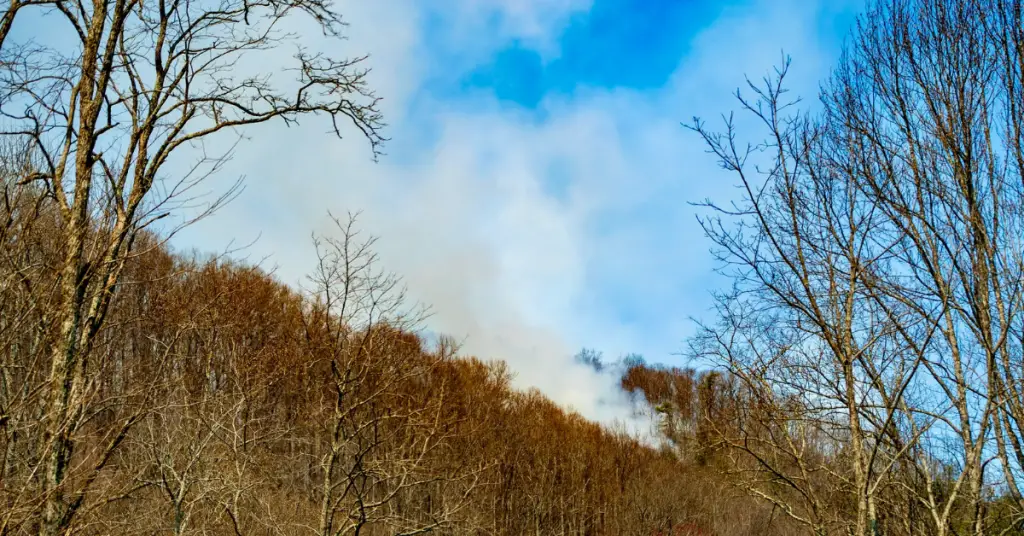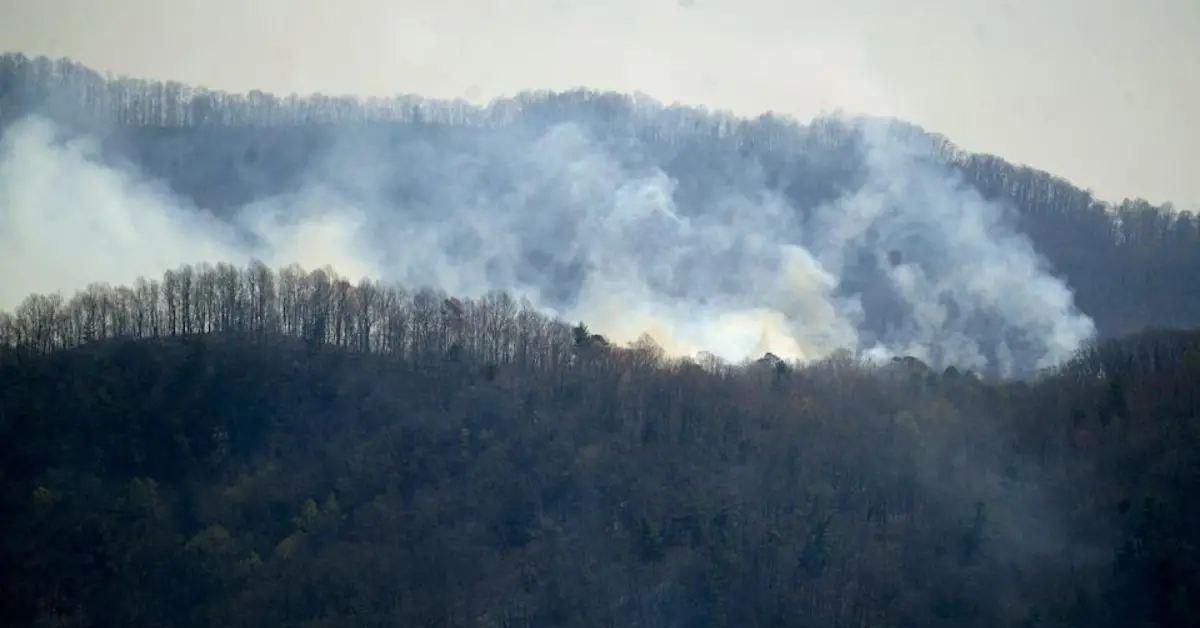As of Saturday, March 29, the wildfires burning in Western North Carolina (WNC) and the South Carolina Upstate are among the most severe in the United States. These fires have been ongoing for 10 days, but new fires are still appearing, creating a dangerous and stressful situation for both residents and emergency services. Despite the challenges, efforts to control and contain these fires continue.
On Friday, a new fire broke out in Garren Creek, located in Buncombe County, North Carolina. This fire quickly spread over an area of 4 acres, but fortunately, firefighters managed to contain it before it could grow any larger. This is just one example of the many fires that continue to pop up across the region. Thousands of acres have already been burned, and many local communities are feeling the effects of these destructive blazes.
Hundreds of firefighters from across the country have been working tirelessly around the clock to battle these fires in WNC and the Upstate region of South Carolina. In Polk County, North Carolina, approximately 500 firefighting personnel have been deployed to tackle the growing number of fires in the area. Tragically, some homes have already been destroyed by the flames.
In Polk and other counties, including Transylvania, mandatory evacuation orders have been issued to ensure the safety of residents. Thankfully, reports so far indicate that there has only been one injury related to the fires, but the situation is still extremely dangerous, and the risk to both lives and property remains high.
The largest fire currently burning in the region is the Table Rock Fire, located in Pickens County, South Carolina. This fire, which has been raging for several days, more than doubled in size on Friday and crossed the state line into Transylvania County, North Carolina. This has made it the largest wildfire in the area and one of the most significant wildfires in South Carolina’s history. The fire has now grown to an alarming size, and it shows no signs of slowing down.
In addition to the Table Rock Fire, several other large wildfires are currently burning in North Carolina. These include the Deep Woods and Black Cove Fires in Polk County, the Alarka Fire in Swain County, and the Rattlesnake Branch Fire in Haywood County.
The Rattlesnake Branch Fire has caused significant damage and led to the closure of Shining Rock Wilderness, located in Pisgah National Forest. This closure is in place to protect the public and allow firefighting efforts to continue without interference from visitors to the area.
The weather on Saturday was slightly less favorable for the spread of fires, but residents and emergency responders are still on high alert. Though conditions have somewhat improved, the danger posed by these fires remains extreme.

Burn bans are currently in effect across North Carolina and South Carolina, and the fire risk continues to be high. While there is hope that the weather may reduce the fire activity somewhat, it is still critical for everyone in the affected areas to take necessary precautions and stay informed about the latest developments.
The Asheville Citizen Times, a local news outlet, is providing live updates on the status of the wildfires throughout Saturday. These updates are crucial for keeping the public informed about the locations of the fires, any mandatory evacuation orders, and other important safety information.
In addition to live updates, an interactive fire map is also available. The map shows the exact locations of the fires, their size, and their origin. It is updated every hour and provides real-time information to help people track the fires.
The most recent update on the Rattlesnake Branch Fire, one of the largest wildfires in the region, reports that it has grown to approximately 1,200 acres in size. The fire is still only about 20% contained, which means that there is a long way to go before it can be fully controlled.
According to the U.S. Forest Service, the primary fuels feeding the fire include dead hardwood trees, rhododendron and laurel shrubs, and certain types of pine trees. The region’s dry conditions have contributed to the rapid spread of the flames, making it even more difficult for firefighters to bring the fire under control.
Firefighters are focusing their efforts on protecting homes and properties in areas such as Crawford Creek, where there is a high risk of the fire spreading. To preserve these properties, bulldozer-made fire lines are being established from Cold Creek to Burnett Cove.
These fire lines help to create a barrier that can stop the fire from advancing into new areas. In addition to these efforts, helicopters are being used to perform strategic firing operations that aim to slow the fire down and reduce its intensity. These operations are crucial for preventing the fire from spreading further and potentially causing even more damage.
As the Table Rock Complex Fire continues to grow and jump across state lines into North Carolina, it has become the largest wildfire in South Carolina’s mountain history. As of Saturday afternoon, the fire had already burned more than 12,000 acres, surpassing the previous record set by the Pinnacle Mountain Fire in November 2016, which peaked at 10,623 acres. The growing size of the fire has forced local officials to reconsider the level of response needed to address the crisis and ensure that firefighting resources are adequate.
While firefighters are working as quickly as possible to contain the fires, the situation remains highly volatile, and the risk of further wildfires is still very much present. Local authorities are urging residents to stay vigilant and follow all evacuation orders and safety recommendations. This crisis is not only a concern for those directly in the path of the fires but for the entire community, as the fires have the potential to affect air quality and public health in the region.
The Asheville Citizen Times continues to provide live coverage and updates on the wildfires, ensuring that the public remains informed as the situation develops. For those living in or near the affected areas, it is essential to stay up-to-date with the latest news and follow official instructions to keep safe. The full impact of the wildfires may not be known for some time, but efforts to control and manage the fires will continue as long as necessary.
Disclaimer: This article has been meticulously fact-checked by our team to ensure accuracy and uphold transparency. We strive to deliver trustworthy and dependable content to our readers.




